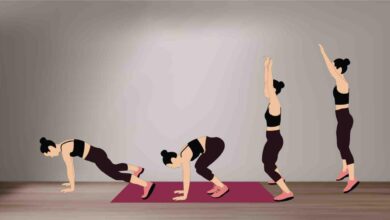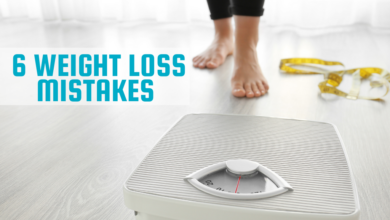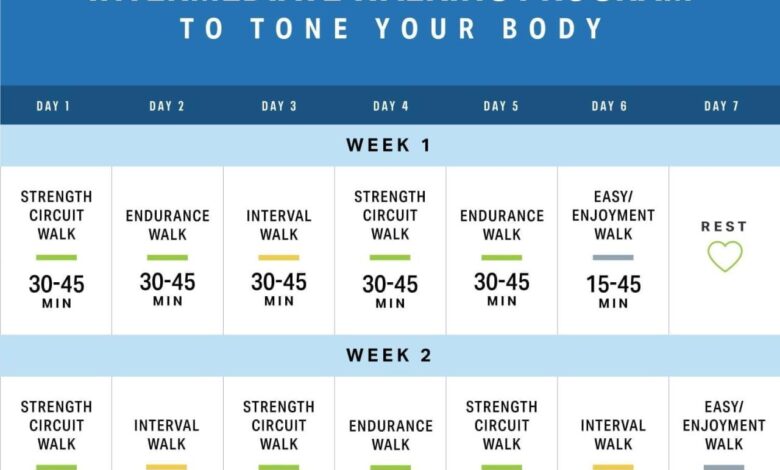
Your 2 Week Walking Maintenance Guide: Step Up Your Health
Your 2 Week Walking Maintenance Guide is your roadmap to a healthier, fitter you! Walking is a simple yet powerful activity that can transform your life, offering a plethora of benefits for both your physical and mental well-being. This guide provides a structured plan to help you incorporate walking into your routine and reap its rewards.
We’ll cover everything from choosing the right shoes and attire to designing a personalized walking schedule that fits your lifestyle. Get ready to explore the power of walking and unlock a healthier, happier version of yourself!
Getting Started
Before you embark on your 2-week walking maintenance journey, it’s crucial to ensure you have the right gear and preparation to maximize comfort and safety. This section will guide you through the essentials for a successful and enjoyable experience.
My two-week walking maintenance guide is all about building a sustainable routine, not just a quick fix. It’s about rediscovering the joy of movement, which is why I recommend checking out this article on ways to rediscover lost healthy habits.
By incorporating these tips into your life, you’ll find that walking becomes more than just exercise; it becomes a way to connect with yourself and the world around you. And that’s the key to making my two-week guide truly work for you in the long run.
Choosing the Right Walking Shoes
The foundation of a comfortable and safe walking experience lies in choosing the right shoes. Your walking shoes should provide adequate support, cushioning, and flexibility to protect your feet and ankles.
- Look for shoes specifically designed for walking:These shoes have features like good arch support, a wide toe box, and a flexible sole, which are essential for walking comfort and injury prevention.
- Consider your foot type:If you have flat feet or high arches, you may need shoes with additional support or cushioning. Consult with a professional to determine the best fit for your feet.
- Break in your shoes gradually:Avoid wearing new shoes for long walks immediately. Wear them for short periods around the house to allow your feet to adjust to the fit and feel.
Choosing the Right Walking Attire
Your attire plays a significant role in your walking comfort and safety. Choosing breathable and moisture-wicking fabrics will keep you cool and dry, while reflective clothing can enhance visibility during low-light conditions.
- Choose breathable fabrics:Opt for materials like cotton, polyester, or a blend of both, which allow air circulation and prevent overheating. Avoid wearing clothing made from materials that trap moisture, such as wool or denim.
- Wear layers:Dressing in layers allows you to adjust your clothing based on the weather and your activity level. You can easily remove or add layers as needed to maintain a comfortable temperature.
- Consider reflective clothing:If you plan to walk during low-light conditions, wearing reflective clothing can significantly enhance your visibility to drivers and other pedestrians. Reflective vests, jackets, or even wristbands can make a difference in ensuring your safety.
Warming Up Before Walking
Warming up before walking is essential for preparing your body for physical activity. It helps to increase blood flow to your muscles, improve flexibility, and reduce the risk of injuries.
- Start with light cardio:Begin with a few minutes of light cardio exercises, such as jogging in place or jumping jacks, to get your heart rate up and warm up your muscles.
- Focus on dynamic stretches:Dynamic stretches involve moving your body through a range of motion. Examples include arm circles, leg swings, and torso twists. These stretches help to increase flexibility and prepare your muscles for walking.
- Avoid static stretches:Static stretches, where you hold a position for an extended period, are best performed after your walk as a cool-down activity.
Cooling Down After Walking
Cooling down after walking helps your body gradually transition back to a resting state. It reduces muscle soreness and promotes recovery.
- Continue walking at a slower pace:After your walk, gradually reduce your pace and continue walking for a few minutes to allow your heart rate to slow down.
- Perform static stretches:Hold each stretch for 15-30 seconds to improve flexibility and reduce muscle tension. Examples include calf stretches, hamstring stretches, and quadriceps stretches.
- Hydrate:Replenish your body’s fluids by drinking water or a sports drink to replace lost electrolytes.
Listening to Your Body
Your body is your best guide. It’s crucial to pay attention to your body’s signals and adjust your walks accordingly.
My 2-week walking maintenance guide is all about finding that sweet spot between staying active and enjoying life. It’s about incorporating walks into your daily routine, even if it’s just a quick stroll around the block. And while I encourage you to fuel your body with healthy foods, I’m not one to say “never” to pasta.
It’s actually a great source of carbs, which can be beneficial for those active walks. Just be sure to choose whole-wheat pasta and pair it with plenty of vegetables, as you can read about in this article on can pasta be healthy.
With a little planning and a focus on balance, you can enjoy your favorite foods and maintain a healthy walking routine.
- Start slow and gradually increase intensity:Don’t try to do too much too soon. Begin with shorter walks and gradually increase the duration and intensity as your fitness level improves.
- Take rest days:Allow your body time to recover between walks. Rest days are essential for muscle repair and preventing overuse injuries.
- Listen to your body:If you experience pain, stop walking and rest. It’s better to err on the side of caution and avoid pushing yourself too hard.
Week 1: Building a Foundation
This week is all about establishing a solid base for your walking routine. We’ll start with shorter walks and gradually increase the duration and intensity as your body adapts. The focus is on consistency and building endurance.
My two-week walking maintenance guide is all about finding that sweet spot between keeping your body moving and not burning yourself out. It’s about consistency, not intensity. And you know what makes sticking to a plan easier? Delicious and nutritious food! That’s why I recommend checking out diets and recipes for meal worthy salads for some seriously satisfying and healthy fuel.
These salads are packed with protein, fiber, and flavor, perfect for keeping you energized and ready for those daily walks.
Walking Schedule for Week 1
This schedule is designed to ease you into walking and help you build a foundation for longer walks in the coming weeks. Remember to listen to your body and adjust the duration or intensity as needed.
- Day 1:15-minute walk at a comfortable pace. Choose a flat, easy route, like a park or your neighborhood streets. This is a warm-up walk to get your body moving.
- Day 2:Rest day. Allow your body time to recover and rebuild muscles.
- Day 3:20-minute walk at a moderate pace. Try incorporating a slight incline or a few stairs to challenge your muscles.
- Day 4:Rest day.
- Day 5:25-minute walk at a moderate pace. Explore a new route or add a short interval of brisk walking.
- Day 6:Rest day.
- Day 7:30-minute walk at a moderate pace. Choose a route that includes a variety of terrains, such as paved paths, grass, and gravel.
Examples of Walking Routes
Here are some examples of walking routes you can explore in your area:
- Parks:Many parks offer paved trails, grassy areas, and scenic views. Look for parks with accessible trails for all fitness levels.
- Trails:Hiking trails can provide a more challenging and adventurous walking experience. Start with shorter, easier trails and gradually work your way up to longer, more challenging trails.
- Neighborhood Streets:Walking around your neighborhood can be a great way to get familiar with your surroundings and explore local businesses. Look for streets with sidewalks and minimal traffic.
Incorporating Different Terrains
Walking on different terrains can help you engage different muscle groups and improve your balance and coordination. Here are some examples:
- Paved Paths:These are ideal for a smooth, consistent walking experience. They’re also easier on your joints.
- Grass:Walking on grass provides a softer surface and can help improve your balance and coordination.
- Gravel:Gravel paths can add a challenge to your walks and help improve your ankle stability.
- Hills:Walking uphill can help strengthen your leg muscles and improve your cardiovascular fitness. Start with gentle inclines and gradually work your way up to steeper hills.
Week 2: Strengthening and Endurance
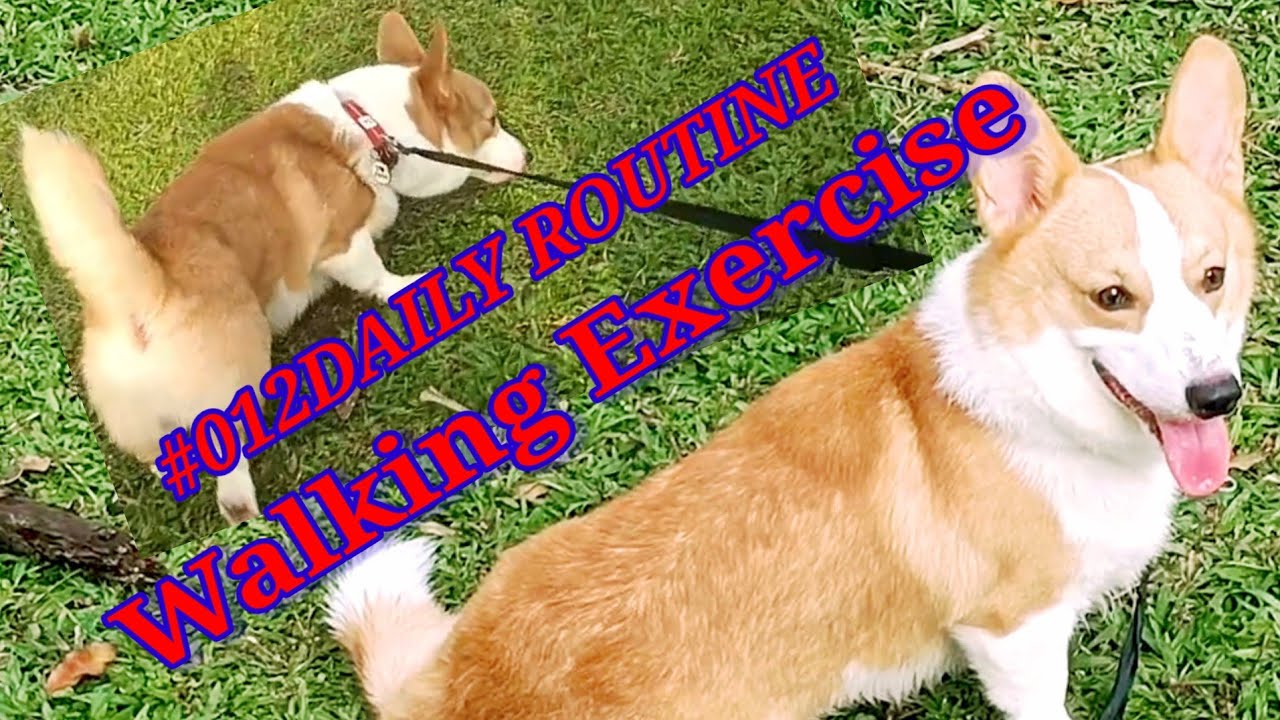
This week, we’ll focus on building endurance and strength by increasing the distance and duration of your walks. We’ll also incorporate brisk walking intervals to challenge your cardiovascular system and enhance your fitness level. Remember, consistency is key.
Walking Plan for Week 2
Here’s a suggested walking plan for the second week, building upon the foundation you established in week 1.
- Day 1:Walk for 30 minutes at a moderate pace. You can try adding a short interval of brisk walking for 5 minutes during this walk.
- Day 2:Rest day.
- Day 3:Walk for 35 minutes at a moderate pace. Incorporate two 5-minute intervals of brisk walking.
- Day 4:Rest day.
- Day 5:Walk for 40 minutes at a moderate pace, including three 5-minute intervals of brisk walking.
- Day 6:Rest day.
- Day 7:Walk for 45 minutes at a moderate pace, with four 5-minute intervals of brisk walking.
Maintaining a Consistent Pace
Maintaining a consistent pace is important for maximizing the benefits of your walks. A moderate pace is generally considered a pace at which you can comfortably hold a conversation.
Incorporating Intervals of Brisk Walking, Your 2 week walking maintenance guide
Brisk walking intervals, also known as high-intensity interval training (HIIT), are a great way to boost your metabolism and improve your cardiovascular fitness. Brisk walking intervals are periods of walking at a faster pace than your usual moderate pace.
Aim for a pace that makes you slightly out of breath.
Monitoring Progress and Adjusting the Plan
It’s essential to monitor your progress and adjust your walking plan as needed.
- Listen to your body:If you feel pain or discomfort, stop and rest. You can also modify your walking plan to accommodate your body’s needs.
- Track your progress:Use a fitness tracker or app to track your distance, duration, and pace. This will help you see how far you’ve come and make adjustments to your plan as needed.
- Increase gradually:As you get stronger, you can gradually increase the distance and duration of your walks. Don’t try to do too much too soon, as this can lead to injury.
- Stay motivated:Find a walking buddy or join a walking group to stay motivated. You can also reward yourself for achieving your goals.
Safety Considerations
Walking is a great way to get exercise and enjoy the outdoors, but it’s important to prioritize your safety. Taking precautions to stay safe can help you avoid potential hazards and enjoy your walks with peace of mind.
Walking in Well-Lit Areas
It is crucial to choose well-lit areas for your walks, especially during the evening or early morning hours. Well-lit streets and sidewalks provide better visibility, making it easier for you to see and be seen by others. This can help prevent accidents and reduce the risk of encountering potentially unsafe situations.
Staying Visible
Wearing reflective clothing or carrying a flashlight can significantly enhance your visibility during walks, especially in low-light conditions. Reflective clothing, such as vests or jackets with reflective strips, reflects light from car headlights, making you more noticeable to drivers. A flashlight can help illuminate your path and make you more visible to others.
Being Aware of Surroundings
Maintaining awareness of your surroundings is essential for safety during walks. Pay attention to your environment, including the people and vehicles around you. Avoid using headphones or devices that might distract you from your surroundings. If you notice anything suspicious, trust your instincts and change your route or seek help.
Taking Precautions
Taking precautions can help minimize risks during your walks. Avoid walking alone in isolated areas, especially at night. Let someone know your walking route and estimated return time. If you are walking in an unfamiliar area, consider using a GPS device or a mapping app to help you navigate and stay on track.
Concluding Remarks: Your 2 Week Walking Maintenance Guide
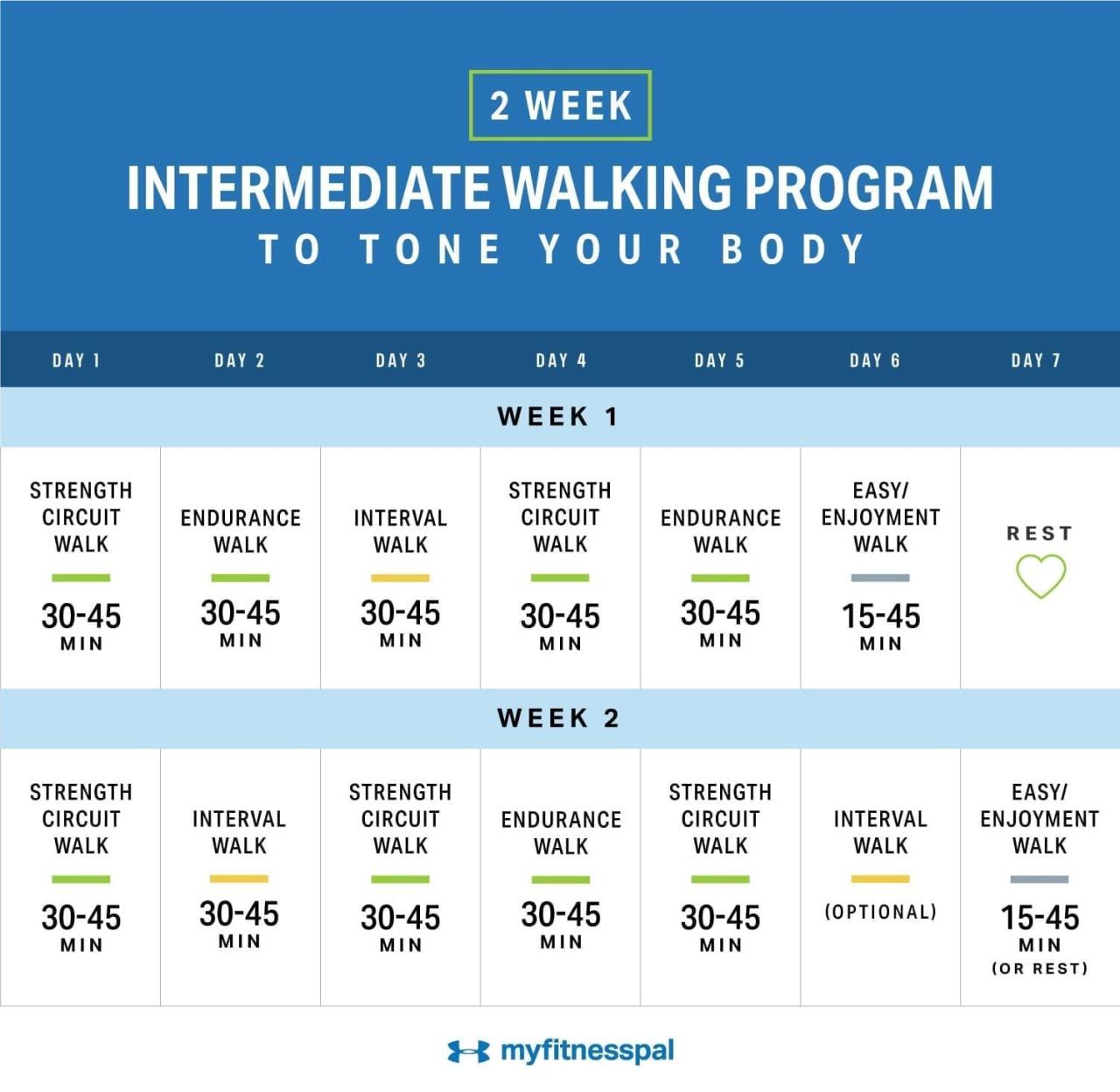
By the end of this two-week journey, you’ll have established a solid foundation for regular walking, boosting your fitness levels, and feeling the positive impact on your overall health. Remember, consistency is key! Embrace the benefits of walking, and enjoy the journey to a healthier, happier you.



